It is no secret that plenty of preppers own dogs, and their dogs may actually factor into their survival plans beyond more than just a companion. It is a sure bet that plenty of people will depend on their faithful canine friend to physically protect them or keep watch for intruders or threats lurking nearby.
There’s a big difference between a family dog and a proper guard dog, or protection dog.
If you want the dog to be a true survival and self-defense asset, there are few prerequisites. First, the dog has to be up to the challenge. It has to have the temperament, the build, strength, speed and most importantly the intelligence to serve as a genuine guard dog.
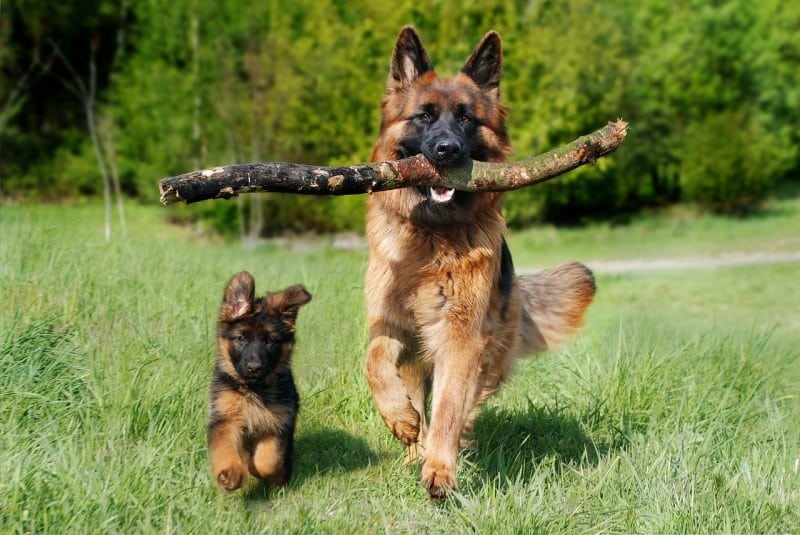
A strong sense of loyalty to you and your family is paramount. The dog must be obedient, but also trust its senses when it comes to strangers.
Certainly not every breed is up to the task and more importantly some breeds are far more suited for this demanding work than others. In this article, we’ll talk a little bit about those demands and offer 10 great breeds that can make great protection dogs for you when you’re in a survival situation.
All Dogs Go to Heaven, but Not All Dogs Are Good Protection Dogs
The idea of using a dog for protection work is certainly nothing new. Even as far back as the dim days of prehistory mankind has been using our domesticated canine pals to shore up his own weaknesses.
The senses of even the laziest, most aloof dog are far superior to humankind’s own, and dogs have always been used for guarding livestock, guarding the perimeter and as early warning systems.
With a strong enough bond, and some training dogs quickly learned who is part of the “pack” and who was not, taking the initiative to protect family members from threats posed by strangers and wolves while letting those who were “in” come and go as they please.
A dog’s superior senses, focus and autonomy are valuable assets on the defense, and that has not changed in millennia.
But the earliest days of man and mutts bonding are long since behind us. generation upon generation of selective breeding practices, especially choosing for even temperament and lack of aggression, have seen the vast majority of domestic dog breeds achieve a state of geniality and passivity that are a shocking contrast to the wolves and wild dogs of old.
This is undeniably a good thing for a companion dog. But, if you think your furry friend will put the clamps on someone that’s threatening to hurt you and your family all on his own initiative, you may be in for a rude awakening.
In all the self-defense cases I ever viewed over the years where dogs were involved I’ve noticed a trend. Most of the time the family dog, no matter what breed it is, does not intervene on their owner’s behalf.
They may bark and make plenty of noise but rarely will they attack the attacker with any sort of meaningful effect. More than a few of them try to get out of the way for their own sake. As it turns out, you can condition the wolf right out of a dog.
The Right Stuff
Even so, some breeds are still a little closer to wolves than others, and breeds that have carried on the lineage of their ancestors for herding, hunting, and guarding show fight far more often than their companion dog counterparts.
If you are serious about using your dog as a self-defense system you need the right breed. Almost any dog can make a good watchdog or alarm system but when it is time to go hands-on, or rather teeth-on; you want a dog bred for tenacity, resistance to pain, strength, agility and intelligence.
It follows that some breeds have these traits in greater abundance than others. any intelligent dog can make a halfway decent close protection dog with the right training.
Considering how expensive that training is and what an investment you’ll be making in your dog as part of your self-defense system you’d be a fool to start with anything except an ideal guard dog candidate.
I’ll furnish you with a list of 10 excellent breeds for protection just below.
You Must Take Training Seriously
No matter how good you think you are with dogs, and no matter what kind of breed you are getting you must factor in the cost of professional protection training along with the dog itself.
Protection training is not obedience training, although obedience is part of the program. Protection training is not agility training, though feats of agility are a big part of the curriculum. No, protection training is something else entirely.
Once you put a dog through protection training, or proper guard training, it is no longer a family pet though it is still a member of the family. You’ll never quite be able to treat that dog the same again.
Chances are you won’t be able to bring people quite as freely in and out of your home with Buster lollygagging around to and fro enjoying the festivities as you used to with dogs past.
The way you address the dog and interact with visitors suddenly takes on an entirely new gravitas. Your dog will be looking for behavioral cues both from family members and from unknown human contacts to inform his decisions.
A misstep or misinterpretation of an otherwise innocent action could lead to tragedy and not just a little peck on the foot or hand. Dogs trained for protection duty at the minimum bite and hold in an effort to bring someone down and immobilize them.
More serious training, or just a more aggressive dog, could see a protection trained dog bite and tear, or use a corn-on-the-cob technique on an offender’s limb, inflicting grievous puncture wounds and lacerating damage. A dog on the attack is not called a “fur missile” for nothing.
Owning any dog is a commitment, owning a protection trained dog is a commitment far beyond even that. You have to be committed to the training, the lifestyle changes and the proper care and handling of your dog once you cross the threshold.
Anything else is negligence on a massive scale. Neglecting proper procedure, care and handling of a protection trained dog could see you, your family or an innocent grievously injured.
Take it seriously.
The Top 10 Survival Dogs for Protection
1. German Shepherd

Most of you probably already knew that the famous ‘GSD’ was going to be number one on this list. Steady and calm when not on the clock but razor focused and confident when working, German Shepherds have long been the police k-9 of choice for decades. It is those same attributes that make them such great police dogs that can make them a great guard dog for you.
German Shepherds are extremely affectionate and generally a good, dependable members of the family even with children making him a standout choice for family-oriented protection dog. However, these dogs do have strong prey drives and may not get along well with other pets especially small ones.
They extremely athletic and need lots of exercise and play, or else they can become anxious and destructive, or even aggressive. Their intellect and work drive comes at a price: they will need plenty of training and objective-oriented work routines to be happy and stable. With proper socialization, German Shepherds are gentle, fun family dogs.
Regarding their health and care, German Shepherds are notorious shedders with their coarse, medium length coat that has a thick undercoat. Be prepared to brush regularly if you don’t want the entirety of your house and all your belongings coated in GSD fur.
Modern breeds of German Shepherd are notorious for hip and elbow dysplasia, gastric dilatation volvulus and degenerative myelopathy. they typically weigh anywhere from 60 to 100 pounds and have an average life expectancy of 7 to 10 years.
2. Belgian Malinois
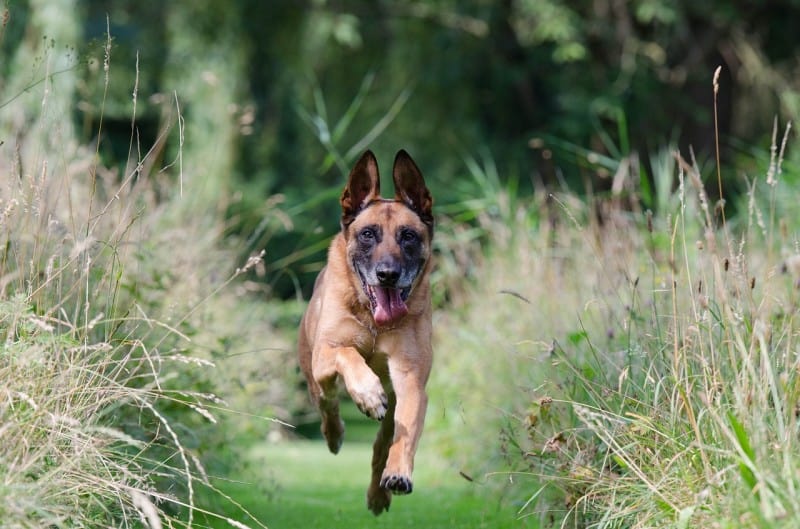
Diligent worker with a singular focus and extraordinarily athletic, the Belgian Malinois is an up-and-coming K9dog of choice in United States, but has long been the police and military dog of choice in Europe and parts of northern Asia, including Russia.
They can be very trying companions, owing to their immense exercise and activity needs but can make a fine for a friend for a very active person: it cannot be understated how much exercise these dog need.
Sometimes mistaken for smaller German Shepherds, in comparison, the Malinois has a leaner, more streamlined and sometimes described as more “athletic” build.
Possessed of incredible agility and great strength to match their superb intellect, Malinois will become very anxious if not given ample exercise and activity. of note, the Malinois may or may not be a great guard dog candidate for family with small children.
They must be trained to tolerate small animals and smaller kids since their prey drive is sharp and they trend towards hyperactivity and intensity even after training.
The herding instinct in particular often results in nips being handed out regularly. don’t even consider adding another pet to the household once you already have a Malinois.
The Belgian Malinois is generally easy to care for but they do shed seasonally although they require less brushing than their cousin the German Shepherd.
As a rule, they are slightly smaller than a German Shepherd with a longer lifespan of 14 to 16 years and weigh anywhere from 50 to 80 lb. common health conditions include hip and elbow dysplasia and progressive retinal atrophy.
3. Cane Corso
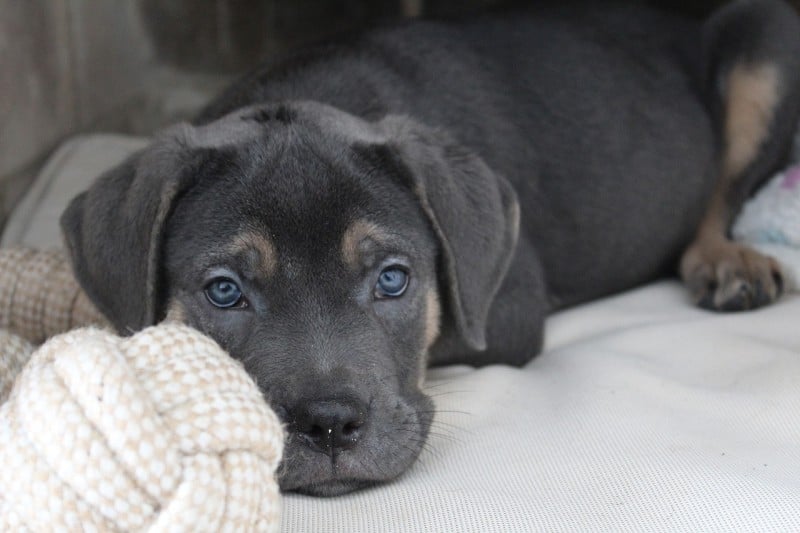
Large, powerful and imperial, these Italian members of the mastiff family are descended from war dog stock. historically used as guard dogs for hunting even very large game and the cause of war, the heavy, stocky build and deep bassy bark of the Cane Corso belies a surprising amount of athleticism and excellent intelligence.
For natural tendency towards guarding and patrolling perimeters makes them a challenging dog for a beginner, but if you have the will to take your place as its master Cane Corsos are loyal, surprisingly affectionate and extremely effective guard dogs. supremely confident in all situations, Cane Corsos are muscularly powerful, fearless and extremely vigilant.
Going anywhere from 80 to 120 lbs and standing about 28 in. at the shoulder, these dogs are downright intimidating. Cane Corsos regularly display a natural aversion towards strangers and sharp territoriality, meaning they must be trained extensively and well-socialized in order to exist peacefully in society.
These dogs have a powerful will; if you give them any slack when it comes to bad behavior like leash pulling, jumping and rowdiness you will pay the piper down the line. give them an inch, they’ll take a mile.
Make sure you give these big boys plenty of exercise and lots to work on, or else they’ll come up with their own work, typically in the form of destructive behavior like hole-digging and rampant chewing.
Like all selectively purebred dogs, Cane Corsos do have their share of genetic health problems. Hip dysplasia and ectropion are common, but other than that they are a surprisingly robust, easy-to-care-for dog that needs minimal brushing and only occasional bathing. make sure you keep their nails trimmed short enough to support their activity level.
4. Rottweiler
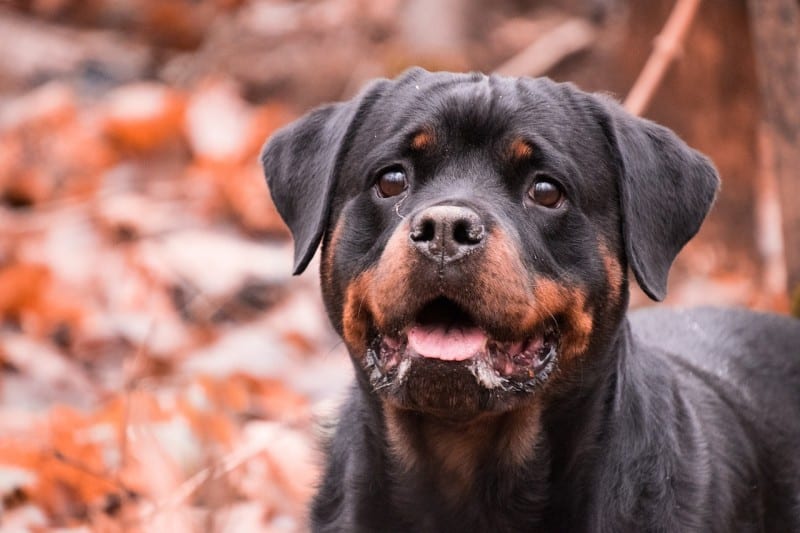
Rottweilers endured a similar reputation that Pit Bulls do today back in the 1980s, being thought of as an inherently dangerous and aggressive dog.
The reality is that the Rottweiler is often study in contrasts: going from lolling, affectionate snugglebug with familiars and family to standoffish and aloof with strangers, Rottweilers are stocky, powerful working dogs that are notoriously hesitant with strangers and extremely protective of their families.
Rottweilers are quick to standoff with those they perceive as threats and never hesitate to alert an interloper that their actions are not welcome. A properly trained Rottweiler makes an excellent guard dog and great family dog.
famously confident and hardworking, Rottweilers are descended from mastiff stock that stretches as far back as ancient Rome. Rotties, as they are popular called, can also be very gentle despite the reputation for power and work-seeking.
As long as you get in early with training and socialization you will have absolutely no problems with your Rottweiler.
Around the home, they are extraordinarily competent guard dogs but their herding instincts remain strong, however, and this can occasionally lead to a little friction as they try to prevent children and smaller members of the family from leaving rooms or the home itself.
Rottweilers are definitely large dogs, weighing anywhere from 80 to 130 lb and standing 27in. high at the shoulder, they have an average life span of 8 to 10 years.
They commonly suffer from osteochondrosis, entropion, and cranial cruciate ligament injuries, but are about part for the course health-wise compared to similar working breeds in their weight class. Their dense coats require a fair bit of upkeep and regular brushing so plan accordingly.
5. Dogo Argentino
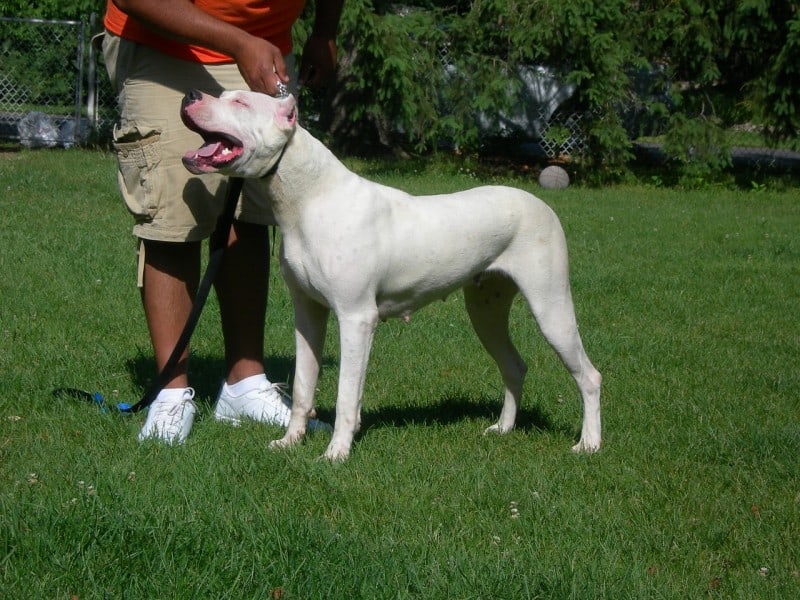
The original doggo, the Dogo Argentino is another large and powerful natural hunter and alert guardian with a beautiful snow white coat to compliment its imperious demeanor.
In contrast to its formidable peers, the Dogo Argentino is a friendly, almost cheerful breed who makes for a warm companion. but this people-pleasing demeanor does not even hint at its lineage.
The Dogo Argentino was originally bred to hunt wild pigs and other large game, and for that activity fearlessness, resistance to pain and extreme stamina was a necessity.
The Dogo Argentino of today has inherited the high energy of its ancestors and requires a considerable amount of exercise for such a large dog.
Dogo Argentinos are not ideal for multi-pet households or human masters with flimsy backbones. they fairly commonly show aggression towards other dogs and have a high prey drive, as befits their hunting dog lineage.
You can expect your Dogo to readily give chase to any smaller animals that get into the yard or come into the house. however affable they are, you can expect your Dogo Argentino to also need regular reinforcement and consistent training. early socialization in puppyhood is a must if you want to be sure of getting a well-behaved adult dog.
It isn’t all work with the Dogo Argentino, though; once he expends his energies he’ll be more than content to take it easy and be lazy around the house, a sharp contrast to other working dogs.
Weighing anywhere from 80 to 100 pounds and standing around 27 inches tall at the shoulder, the Dogo Argentino is comparable in build size to Rottweilers and most mastiffs. being relatively recently developed from a variety of other dog stock; the Dogo Argentino is largely free of health problems save deafness.
Their life span is however somewhat variable averaging anywhere from 9 to 15 years. but there is yet more good news: the Dogo Argentino is a very low maintenance dog. they shed little and are regarded as a low-odor breed.
6. Pit Bull
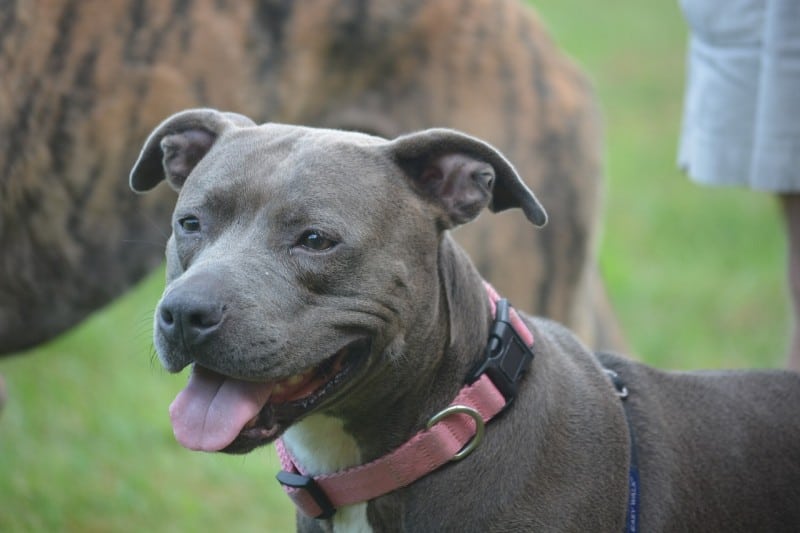
The infamous Pit Bull, also known as the Pit Bull Terrier, or American Pit Bull Terrier is a compact, dense and powerfully muscled dog renowned for its tenacity, seeming invulnerability to pain and relentless determination in a fight.
Their history as bull-baiting dogs and fighting dogs has given them an aura of infamy and fear, but the breed today is also eager to please, family-centric and highly intelligent. coupled with their well-developed physical characteristics, the Pit Bull can make a fine guard dog.
These dogs vary in size and musculature, but trend towards a very dense and powerfully muscled body weighing around 60lb. They’re very sturdy, human-friendly, athletic and courageous.
Their tenacity especially needs no introduction. While very human friendly, they may not do well with other dogs, especially dogs they do not know. You will always be best served get a Pit Bull as a puppy and immediately implement proper training as soon as they are able to attend.
A strong-willed, calm, steady owner is a necessity for a Pit Bull to thrive. May be stubborn, if you allowed them to indulge their will and not follow your own; you might wind up with a spoiled dog who’s telling you what’s what.
Pit Bulls are another highly refined dog breed that has inherited its health problems. hip dysplasia, hypothyroidism and canine atopic dermatitis are all common ailments that Pit Bulls suffer from. another breed of highly variable life span, they can live anywhere from 8 to 15 years.
Their short coats usually have a sharp and attractive appearance, but they do shed quite a bit and require regular brushing and other grooming care. keep a vacuum cleaner handy.
7. Rhodesian Ridgeback
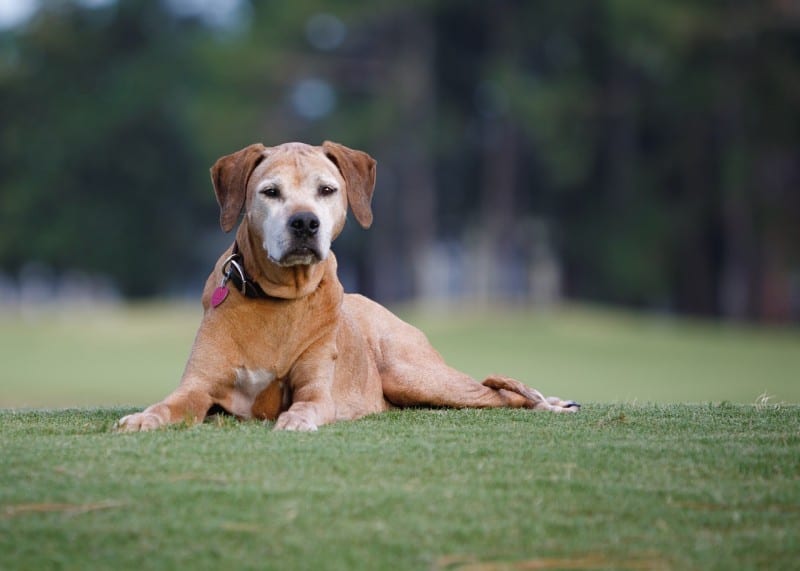
these tall, noble and athletic dogs were originally bred by European settlers in Africa back in the 1500s. Crossbred with local wild dogs, the Rhodesian Ridgeback gained its name from the stripe of hair that grows in the opposite direction from the rest of its fur along the length of its spine.
These dogs were originally raised for hunting and their intellect and powerful build soon gained them work as guard dogs and watch dogs.
These hounds were formerly known as the African Lion Hound, since they were once used to corner and hold lines at bay until hunters could arrive to dispatch them.
With tenacity and determination enough to corner a lion, you know these dogs have the chops to protect you and your family!
Ridgebacks are known for their intense loyalty and equally intense focus, particularly on whatever has piqued their interest by sight, scent or sound. specialized training with an emphasis on attentiveness and obedience is a must with Ridgebacks since they are heavily inclined to follow their own interests.
Aside from those quirks, these dogs are highly athletic and need plenty of physical and mental exercise. at the bare minimum 30 minutes to an hour a day of stimulation will keep your Ridgeback happy and healthy.
In keeping with their hunting stock lineage, these dogs are apt to chase anything that moves. they may not do well with small children and certainly won’t do well with small animals, domestic or wild.
A pound of prevention is worth a pound of cure with a Ridgeback, and involving him and some structured activity that exercises his interests can prevent behavioral problems.
traditional Ridgebacks weigh anywhere from 70 to 85 pounds and stands about 26 inches tall at the shoulder. their glorious, unique coats shed very little and require little grooming care, aside from an occasional bath and nail trim.
They do have some health problems they are known for, specifically dermoid sinus, elbow dysplasia and hip dysplasia.
8. Giant Schnauzer
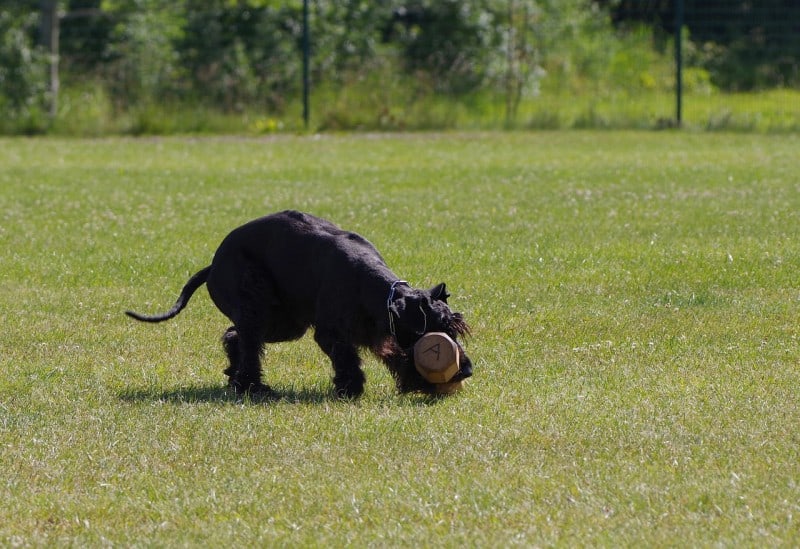
majestic, commanding and imposing best describes the Giant Schnauzer. this jumbo-sized version of the smaller, traditional schnauzer is a working dog with an air authority. standing over two and a half feet tall at the at the shoulder and with the largest specimens weighing nearly 100 lbs.
The Giant Schnauzer is definitely a large breed. these dogs are intelligent, confident and quick learners meaning they’ll take well to any skill-building you can provide for them.
But on the other hand they need intense socialization due to their natural aloofness. these dogs were first developed as livestock guards and small game hunters meaning everything “under the hood” is entirely adequate for protection work.
While they may seem an odd choice for a protection dog, these dogs were used throughout Europe by police and military as guard and attack dogs. today, they’re principally bred as companion dogs but their working class heritage, intelligence and stamina make them fine protection dogs, especially ones that don’t scream “attack dog”.
The principal shortcoming is their willfulness, which they display readily even with the family they love the most. Giant Schnauzers require plenty of exercise and thought-provoking activities; obstacle course training, or consistent hiking over uneven ground will prove physically and mentally fulfilling enough to pacify these dogs.
Giant Schnauzers do great with people, even children, though their herding instincts and large size may prove a liability with smaller children. Giant Schnauzers do not, though, do too well with other dogs, being fairly territorial.
This breed has a coarse, stringy double coat that needs regular grooming and brushing, and you’ll be constantly teasing and trimming the mustache around their snout to maintain their distinctive look.
Unfortunately, the Giant Schnauzer has inherited a goodly selection of genetic disorders and diseases, including a propensity for skin allergies, hip and elbow dysplasia, hypothyroidism, Von Willebrand disease and osteochondritis dissecans.
9. Akita

kites are best described as stoic, alert and naturally suspicious to strangers. these noble dogs were originally bred for hunting and guardian duties and that means we’ll need just a little bit of training and encouragement to see them apply their instincts in the service of protecting you and your family.
Their gorgeous, fluffy coats hide a dog that is powerfully built, with thick, heavy bones and dense musculature. These Japanese giants are very strong-willed and normally quiet which lends them an air of aloofness.
While they can be affectionate in their own way, these dogs do best in the hands of an experienced, equally strong-willed owner who can master them and does not need a ton of physical affection.
standing around 28 inches tall at the shoulder and weighing at least 100 pounds, kites are one of the heaviest and most powerful dogs on earth. equally stubborn and imposing, kites need serious disciplinary training and must prove to respond to you at all times in order to make useful protectors and companions. their distinctive, bear-like head is an obvious tipoff to their extraordinary power.
These dogs were bred to be guards and hunters first, and this translates into extreme standoffishness with strangers and unwillingness to tolerate any trespassing animals in their territory. kites are somewhat notoriously bad with other same-sex dogs.
Compared to the other dogs on this list, kites are not particularly high energy but still need plenty of exercise. you would do well to not take them to the dog park unless they are properly socialized.
Also take care with them around your kids as their prey drive is strong, and unless they grew up with them you need to keep a close eye on them with small children around.
Kites are fairly healthy dogs that have inherited a few specialty health problems of their own. the ever-present hip dysplasia is one of them, as is hypothyroidism, but the more serious problem is their susceptibility to gastric dilatation volvulus, a medical emergency that results from their stomach literally twisting itself in a knot, typically after eating or drinking too much too fast.
They also sometimes suffer from sebaceous adenitis which is a type of autoimmune system condition leading to the death of their sebaceous glands. this results in a patchy loss of fur on their head and back. while mostly cosmetic, it is something to be aware of.
10. Tibetan Mastiff
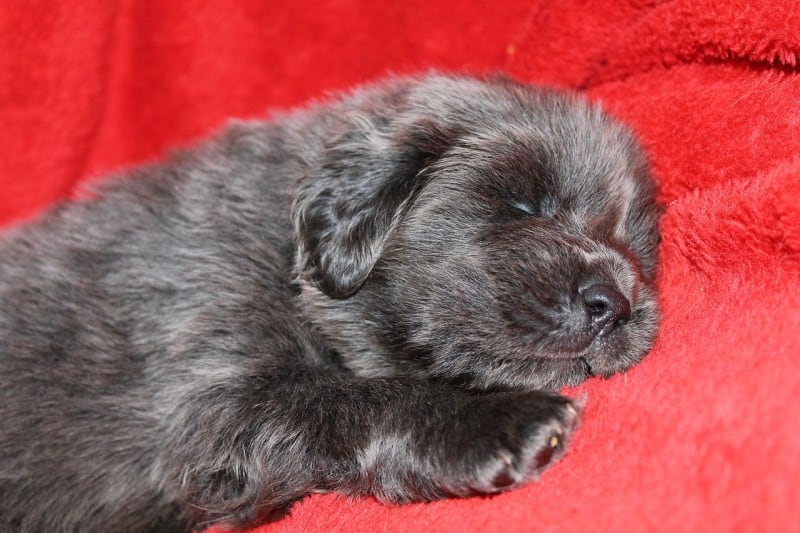
The massive, ancient and intimidating Tibetan Mastiff is perhaps the progenitor of all mastiffs and its origins in ancient and rumor-shrouded Tibet are almost completely unknown. a Tibetan Mastiff may weigh upwards of 150 lb, meaning an astonishing amount of muscle on a dog for a would-be intruder to be confronted with.
These dogs are extremely imposing, and as can be best told were always bred for the protective qualities. this makes them watchful, aloof and intimidating as a rule. while they may be warm with family they’re always on guard, constantly looking for threats and following their instincts.
These dogs are perhaps far closer to their wilder cousins than most other domesticated breeds, and they do not respond well to traditional obedience training.
Extremely intelligent and equally quick learners they will respect and respond to commands from their owner if they trust the owner’s judgment, but that is where their obedience ends.
These dogs as a rule never feel the need to demonstrate what they know how to do and somewhat famously will perform with perfect manners in training classes only to seemingly forget it all as soon as they get home on their turf.
While extremely powerful, these dogs only have modest stamina and do not waste energy, meaning they will often be content to lounge around and conserve their strength.
While they seemingly take to guard duty naturally with very little training or incentive and this can make them attractive for our purposes, it must be emphasized that Tibetan Mastiffs will always follow their instincts.
You must never, ever trust one these dogs off the leash. if they don’t want to come back, there’s nothing you can do to entice them. they’re not driven by food as a rule and otherwise there’s almost nothing you can do to lure them back to you.
This breed’s large and fluffy, coarse coat is highly attractive and shockingly low maintenance; it does not really shed, although once a year they exhibit a behavior known as “blowing” where their dense undercoat comes out all at once. you must be prepared for this or you will have a dreadful mess to clean up.
As with all purebred dogs, Tibetan Mastiffs have their fair share of inherited health problems. the all-too-common elbow and hip dysplasia are present as is a susceptibility to hypothyroidism and eye issues like entropion and ectropion. Sporadic reports of seizures have been reported in this breed but are not thought to be prevalent.
Conclusion
Choosing a protection dog to help you through a survival situation is logical though a substantial investment in time, energy, expense and lifestyle changes.
But if you’re willing to do what it takes you will have an asset that can hardly be replicated: a canine guardian with extraordinary senses, indomitable will and, literally, a mind of its own.
Read over the considerations presented in this article and the list of dogs that are suitable for protection work and you will be sure to get off on the right foot, or rather paw, on your quest to finding the perfect guard dog.

via Modern Survival Online https://ift.tt/2R5ey3f
No comments:
Post a Comment